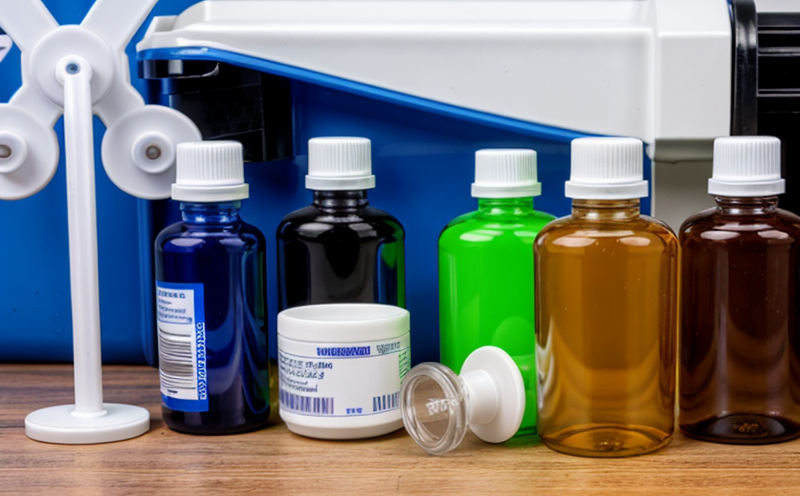ISO 10993-10 Irritation and Sensitization from Medical Waste
The ISO 10993 series of standards provides a framework for ensuring the safety of medical devices. ISO 10993-10 specifically addresses irritation and sensitization effects that could arise from contact with medical waste products. This service is crucial for quality managers, compliance officers, R&D engineers, and procurement professionals involved in the development and certification of medical devices.
When dealing with medical waste, it's essential to ensure that any by-products or components do not cause adverse reactions when they come into contact with human skin. This standard is particularly relevant for materials like gloves, dressings, and other medical supplies that are in direct contact with patients. The test procedures outlined in ISO 10993-10 help manufacturers demonstrate compliance with regulatory requirements.
The testing process involves exposing samples of the material to human skin cells or extracts derived from human skin. The goal is to observe and quantify any irritation or sensitization effects that may occur over a specified period. This can be done using various methodologies, such as in vitro tests on human cell cultures or ex vivo tests with intact human skin.
The test procedures are designed to mimic real-world conditions as closely as possible. For instance, the duration of exposure and the concentration of extracts used are carefully calibrated based on expected clinical use scenarios. This ensures that the results obtained from these tests are relevant and predictive of actual performance in a medical setting.
During sample preparation, it's important to maintain the integrity of the material while ensuring it is representative of the final product. This may involve cutting samples into standard sizes or preparing extracts according to specific protocols. The choice of extraction solvents and techniques will depend on the nature of the material being tested.
| Parameter | Description |
|---|---|
| Exposure Duration | 24 hours for in vitro tests, or as specified by the standard. |
| Concentration of Extracts | Based on expected clinical use, typically ranging from 0.1% to 1%. |
| Type of Cells/Extracts Used | In vitro: Human keratinocytes; Ex vivo: Intact human skin. |
The test results are evaluated based on predefined criteria. For irritation, changes in cell viability or morphology may be observed and quantified. Sensitization is typically assessed through the use of lymphocyte proliferation assays. Positive results indicate a potential risk of adverse effects when the material comes into contact with human skin.
Understanding these test parameters and procedures is crucial for quality assurance teams responsible for ensuring that medical devices meet safety standards. By adhering to ISO 10993-10, manufacturers can demonstrate compliance with international regulations and build trust with regulatory bodies and healthcare providers.
- Materials Tested: Gloves, dressings, adhesive tapes, sutures.
- Potential Risks Addressed: Skin irritation, contact dermatitis, sensitization reactions.
- Regulatory Compliance: EU MDR, US FDA, WHO guidelines.
Eurolab Advantages
Eurolab offers a comprehensive suite of testing services tailored to the unique needs of the medical and pharmaceutical sectors. Our expertise in waste management and recycling, combined with our deep understanding of ISO standards, ensures that we provide accurate and reliable results.
Our team of experienced scientists and engineers is dedicated to ensuring that every test conducted meets the highest quality standards. We use state-of-the-art equipment and follow internationally recognized protocols to ensure consistency and accuracy in our results.
We offer a range of services, including not only ISO 10993-10 testing but also other relevant standards such as ISO 10993-5 for biocompatibility studies. Our facilities are equipped with the latest technology and are regularly audited to maintain our certification status.
Our commitment to quality is reflected in our continuous improvement efforts. We participate in proficiency testing programs and regularly review our processes to ensure we remain at the forefront of industry standards. This dedication to excellence allows us to provide clients with confidence that their products meet regulatory requirements.
Quality and Reliability Assurance
- Proficiency Testing: Regular participation in inter-laboratory proficiency tests.
- Equipment Calibration: Routine calibration of all testing equipment to ensure accuracy.
- Standard Operating Procedures (SOPs): Strict adherence to internationally recognized protocols.
- Data Management: Secure and accurate management of test data for traceability.
Frequently Asked Questions
Use Cases and Application Examples
The results from ISO 10993-10 testing are crucial in several scenarios:
- New Product Development: Ensuring that new materials used in medical devices do not cause adverse effects.
- Regulatory Compliance: Meeting the requirements set by various regulatory bodies like the EU and US FDA.
- Product Recall Prevention: Identifying potential issues early to prevent product recalls.
- Client Confidence: Providing clear evidence of compliance, which builds trust with healthcare providers and patients.





